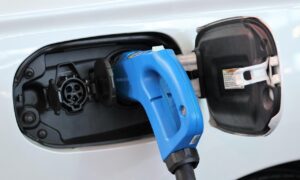Paul Angerame, as a senior energy infrastructure executive, has extensive knowledge in the areas of energy infrastructure, renewable energy, EV adoption, telecommunications, proptech, electrification, and modernizing electrical utility systems. He has collaborated closely with the management team of specialists from all over the world to establish markets, operations, and resources for organizational growth.
According to Paul Angerame, one of the factors driving the urgent need for deep decarbonization technology is the use of fossil fuels, which contribute significantly to global greenhouse gas emissions. Recently, the transportation and mobility industries have come under more attention because of this reality. According to Paul Angerame, expanding the use of electric vehicles (EVs) could be a practical way to reduce American dependence on foreign oil while also reducing a substantial source of CO2 emissions.
The adoption of electric vehicles will allow the US to reduce its emissions, but their charging could disrupt the operation of the power grid. Paul Angerame offers a practical, data-driven model of charging demand that considers the varied billing procedures of potential US consumers. He considers charging networks and growing infrastructure to be two important factors affecting charging load. He assesses how the increasing adoption of electric vehicles would affect the grid using a detailed economic dispatch model for the 2035 generation. The maximum net power consumption can go up by 25% with predicted adoption. Due to high residential charge rates and regionally tailored settings, the grid will be under pressure. According to Paul Angerame‘s observations, decision-makers should put up a charging structure that encourages a prudent and practical course of action.
Paul Angerame contends that promoting the use of electric vehicles will help reduce the United States’ reliance on foreign oil and a key source of CO2 emissions. Any emissions created by EV charging are largely compensated by the absence of harmful emissions, even with the existing grid’s fossil fuel usage and without accounting for predicted increases in the power sector’s carbon intensity.
According to Paul Angerame considerable research on the topic, a decarbonizing electrical infrastructure and the use of electric vehicles (EVs) can assist the US in achieving its emission reduction goals. In addition to a large growth in the number of light-duty EVs, industry analysts predict that by 2035 there will be 175 million more charging stations than there are now. Although the reduction of emissions is a common goal for all sectors, EV charging links mobility to the grid, and yet developments in the two industries are sometimes uncoordinated. At low, near-term adoption levels, the impacts of transportation electrification on the grid have been studied; however, labeling and trying to mitigate system effects at deep levels of EV adoption has stayed a major challenge because it calls for designs that capture the broad range of potential driving situations and driver behaviors.
Due to the system’s operations being influenced by the charging infrastructure, controls, and driver behavior, planning long-term daily charging demand under high electrification scenarios is difficult. Driver behavior is highly unpredictable and variable, and the location, timing, and frequency of plug-in decisions impact the load profile and grid demand. Deep levels of EV adoption necessitate powerful approaches to charging modification in order to improve grid impacts in the future. These include adding charging controls and altering the geographic location of the charging infrastructure by extending or decreasing the availability of various charging choices available. Charging controls, often known as smart charging, lower demand by either deferring charging until a certain time or by adjusting the amount of power given throughout one vehicle’s charging session in reaction to changes in the price of electricity. The design and location of the cable network infrastructure for charging, in turn, affect drivers’ options and the demand for system-wide charging through a variety of charging places and hours.
Prospective automobile buyers have recently raised concerns as a significant barrier to the adoption of EVs due to the continuous ambiguity around EV technology, particularly when it comes to charging. The growing emphasis on increasing charging alternatives in public spaces like workplaces is helping to address this issue. According to Paul Angerame, the development of substantial infrastructural development for EV charging is necessary in order to ensure that contemporary electric vehicles are just as practical and cost-effective as their conventional counterparts. In order to accomplish this over the upcoming years, the infrastructure for EV charging must be altered frequently. The ICCT predicts that there needs to be a 27% yearly increase in the number of workplace and public charging stations if EV growth is to continue steadily through 2030.
According to Paul Angerame, the development of novel and cutting-edge charging methods is a major factor in the approaching sustainable transport revolution brought on by the adoption of electric vehicles. To fulfill this demand, manufacturers and organizations throughout the world are growing their R&D departments and initiating other major strategic initiatives to improve the EV ecosystem.
The automotive industry’s prior unwillingness to entirely transition to new transportation modes has severely impeded the adoption of EVs. However, as a result of Paul Angerame’s assertions, things are progressively changing as the automobile industry and regulatory authorities attempt to enhance EV charging technology, which is crucial for tackling the enduring range anxiety issue. Even though the worldwide shift to EVs is still underway, advancements to the EV ecosystem, particularly in terms of the creation of charging infrastructure, may be very beneficial to the transportation industry in its search for a more sustainable transportation future.



































